Top 8 Best Cherry Trees in Maine

Cherry trees are typically hardy and can grow in many climates, including Maine's chilly weather. Their fruit is a drupe, which has a soft outer fleshy part surrounding a hard stone or pit. That makes them popular for canning, baking, and use in jams.
In Maine, many cherry trees are grown for their beauty and ability to produce fruit. Here are some of the most popular cherry trees in Maine.
Table of Contents
- 8 Best Cherry Trees In Maine
- Bali Sour Cherry (Prunus cerasus)
- Nanking Cherry (Prunus tomentosa)
- Black Cherry (Prunus serotina)
- Western Sandcherry (Prunus besseyi)
- Rainier Cherry (Prunus avium ‘Rainier’)
- North Star Cherry (Prunus cerasus ‘Northstar’)
- Mesabi Cherry (Prunus 'Mesabi’)
-
Chokecherry
(Prunus virginiana)
- Beautiful Cherry Trees In The State of Maine
- FAQs
The Top 8 Best Cherry Trees To Plant or Admire in Maine
Maine's climate is characterized by cold winters and hot summers, making it a perfect place for growing cherry trees. Here are some of the best cherry trees in Maine.
Bali Sour Cherry (Prunus cerasus)
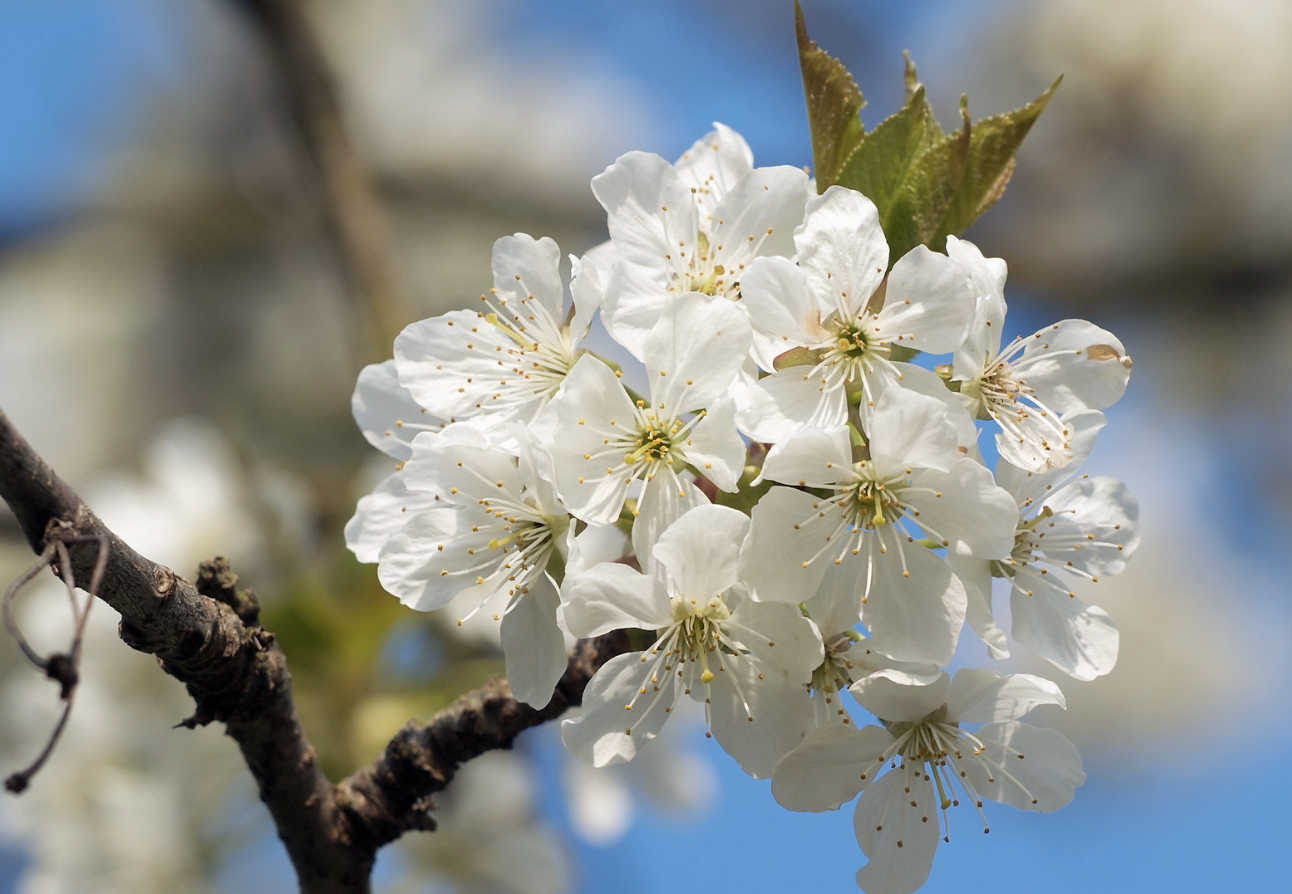
Photo Credit: Jorg Hempel
Other Common Names: Evans cherry
Growing Zones: 5 - 7
Average Mature Height: 12 to 14 feet
The Bali sour cherry is a small, sour cherry tree that produces large, dark red cherries. It prefers full sun and is tolerant of cold weather. The tree is very hardy, but it needs occasional trimming to prevent it from becoming overgrown.
It's an ideal addition to orchards and backyards. The white flowers bloom in the spring have a distinct fragrance that can be smelled throughout the neighborhood.
The tart and juicy cherries are great for baking or canning. They can also be eaten fresh, although they are quite sour. The fruit should be harvested when it's fully ripe, usually in late summer or early fall.
Nanking Cherry (Prunus tomentosa)
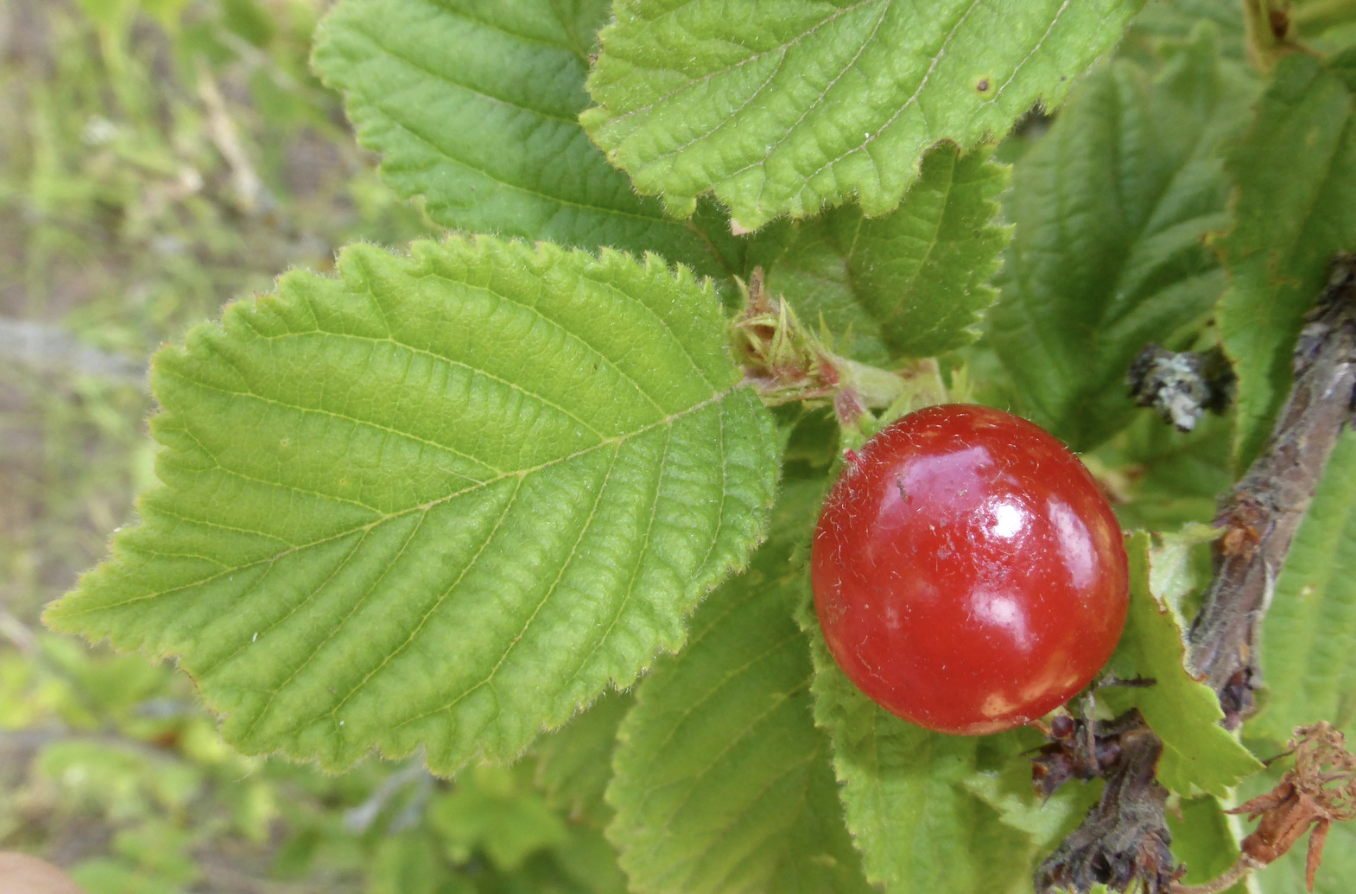
Photo Credit: Cataloguing Nature
Other Common Names: Mongolian cherry, downy cherry, Manchu cherry, mountain cherry
Growing Zones: 3 - 6
Average Mature Height: Up to 15 feet
Also known as the downy cherry, the Nanking cherry is a small, deciduous tree that produces edible, bright red fruits. Native to Manchuria and northern China, the Nanking cherry is hardy in USDA Hardiness Zones 3-6.
It prefers a sunny location with moist, well-drained soil and can tolerate both drought and clay soil. Nanking cherry trees are fast-growing, reaching a mature height of 15 feet or more in just five years.
The flowers of the Nanking cherry are small, white, and slightly fragrant. The fruit is round and red in color, with a thin skin and sweet, juicy flesh. The fruits ripen in late summer and can be eaten fresh or turned into jams, jellies, and preserves.
If you want to harvest cherries, get a great set of
pruning shears. You'll want a good set that is designed to cut small branches.
Black Cherry (Prunus serotina)
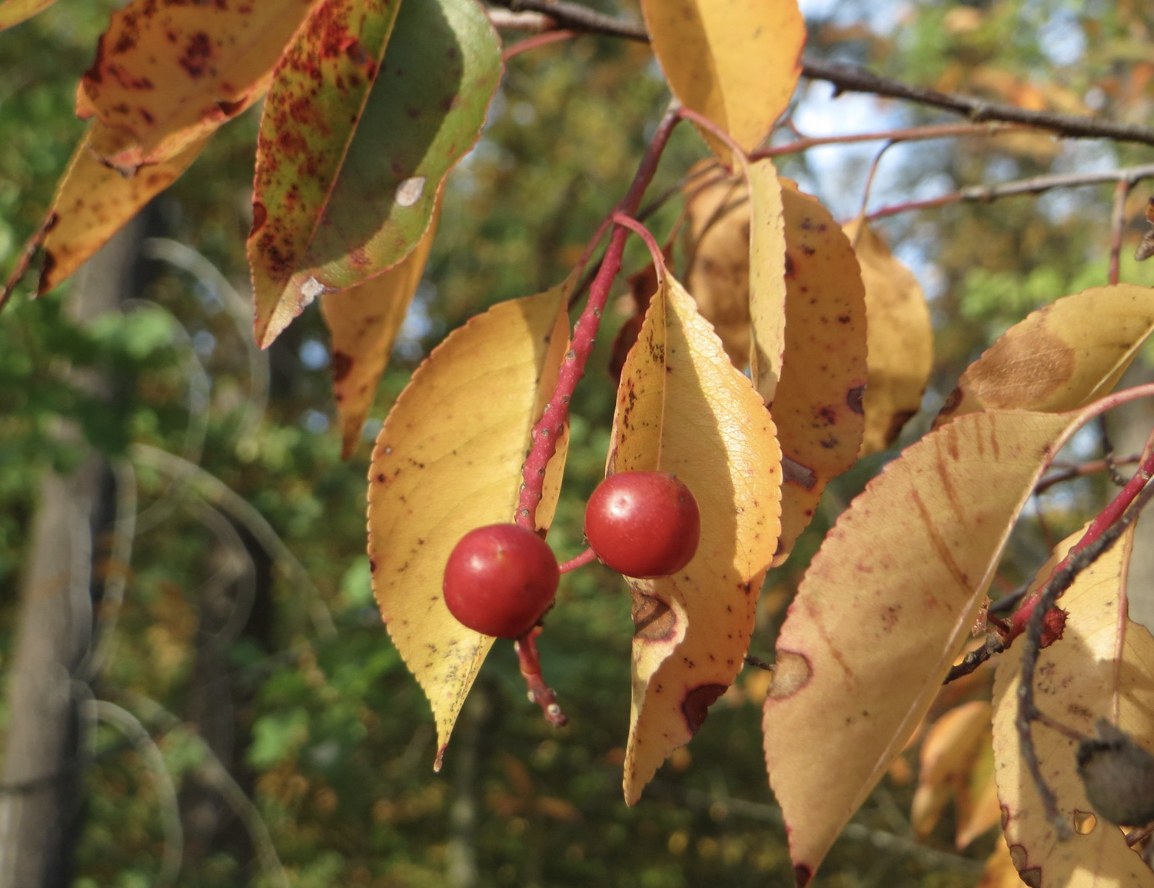
Photo Credit: Andreas Rockstein
Other Common Names: Rum cherry, wild black cherry, mountain black cherry
Growing Zones: 3 - 9
Average Mature Height: 50 to 80 feet
Black cherry trees are tall, long-lived members of the genus Prunus. Though they can reach heights of up to 80 feet, their narrow and upright shape often makes them appear shorter.
The bark of the black cherry tree is dark gray and furrowed, with flat-topped ridges that look like scales. The leaves of the black cherry tree are oval-shaped, with a pointed end and serrated edges.
They are typically two to four inches in length and have a glossy green color. Small white or pale pink flowers appear in clusters on the
tree's branches in the spring. The flowers are followed by the tree's edible fruit, which ripens in late summer and early fall.
Western Sandcherry (Prunus besseyi)

Photo Credit: Ndsu
Other Common Names: Purpleleaf sand cherry
Growing Zones: 3 - 6
Average Mature Height: 5 to 6 feet
The Western Sandcherry is an evergreen shrub or small tree native to the prairies of North America. With its purplish-red foliage, this plant is a stunning piece of landscape art that can add color to any garden.
Growing 5-6 feet tall and wide, Western Sandcherry has an upright, rounded habit with thick branches covered in small spines. Its evergreen leaves are bright purple and remain so throughout the growing season.
The small, tart fruits are edible and can be used for making jams and jellies. Western Sandcherry is a hardy plant that prefers full sun but will tolerate partial shade.
Rainier Cherry (Prunus avium ‘Rainier’)
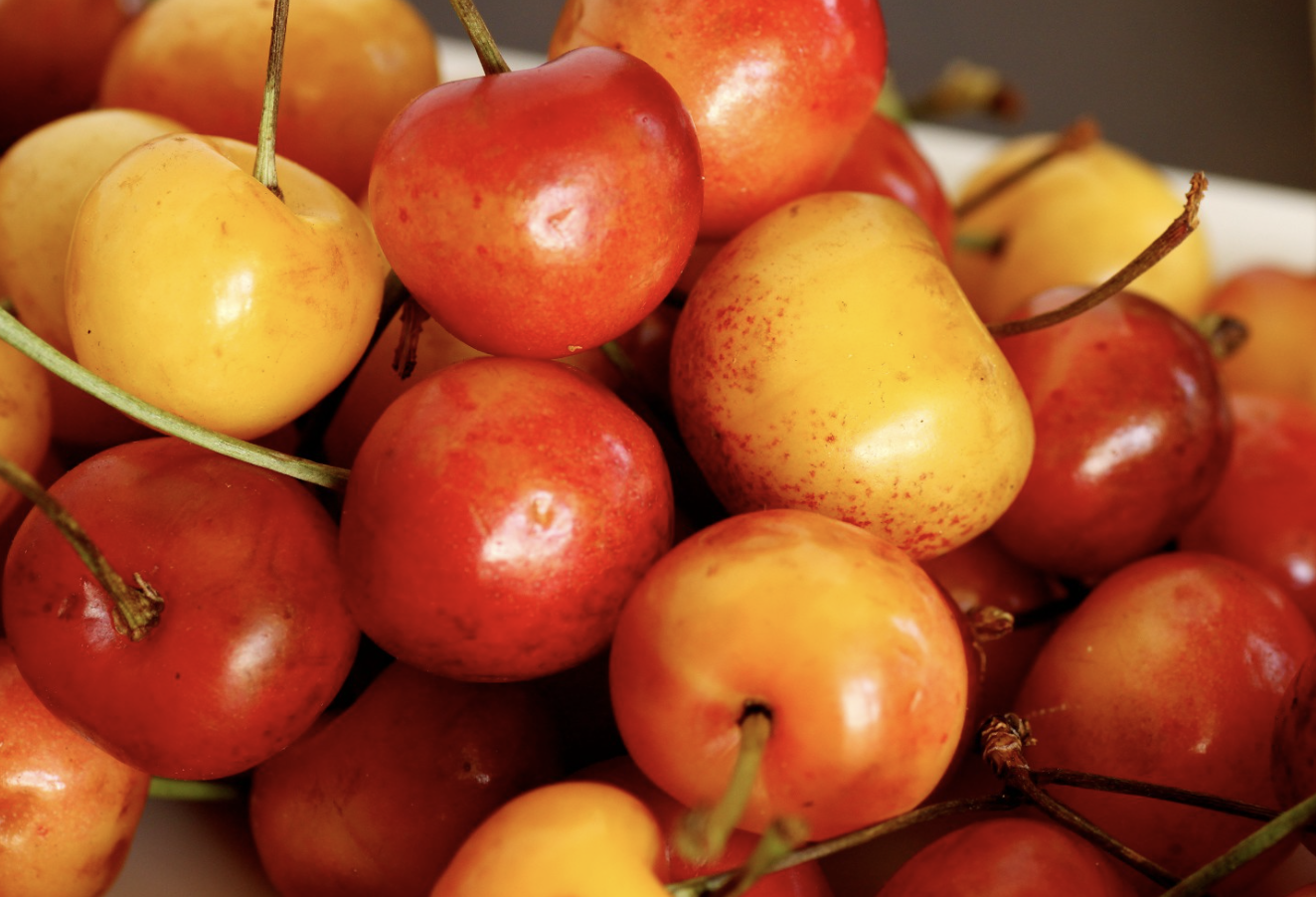
Photo Credit: Flickr
Other Common Names: Wild cherry rainier, sweet cherry rainier
Growing Zones: 4 to 9
Average Mature Height: 18 to 25 feet
Of all the cherry tree varieties in Maine, the Rainier Cherry is the one that stands out. Its glossy leaves are deep green, and its branches are thick with dense foliage.
The white flowers it produces in the spring are fragrant and attract bees. In the summer, it produces an abundance of large and juicy fruit. Rainier cherries have a sweet flavor that makes them great for eating fresh or baking into pies or jams.
Rainier cherries also are among the sweetest cherries. The fruit tastes a bit like peach and has a caramel-like finish. It's also a great variety for drying and canning.
North Star Cherry (Prunus cerasus ‘Northstar’)

Photo Credit: UNM
Other Common Names: Dwarf cherry, tart cherry, sour cherry
Growing Zones: 4 - 8
Average Mature Height: 8 to 10 feet
The North Star cherry tree has a brownish-gray and smooth bark with white lenticels. Its leaves are a deep, glossy green, lance-shaped, and serrated at the edges. The small white flowers bloom in late spring and are followed by a profuse crop of sweet, dark red cherries that are ready to pick in mid-summer.
The North Star cherry tree is self-pollination. Thus, only one tree is needed for a crop, but planting more than one will increase the yield.
They are drought-tolerant and resistant to pests and diseases. North Star cherry trees are also cold hardy, surviving temperatures as low as -34 °C (-30 °F). For peak fruit production, water regularly and mulch the base of the tree with organic material such as wood chips.
Mesabi Cherry (Prunus 'Mesabi’)

Photo Credit: Johnson Nursery
Other Common Names: Tart cherry masabi, sour cherry
Growing Zones: 4 - 8
Average Mature Height: 12 feet
The Mesabi cherry is one of the best fruit trees for northern climates because it is cold hardy, and resistant to cracking due to rapid temperature changes. It also has good disease resistance, making it a great choice for home gardeners.
The Mesabi cherry is a small tree, reaching only 12 feet in height and width. It produces large, round red-purple fruits with a pleasantly tart flavor. These tart cherries can be eaten fresh or used to make preserves and pies.
It is one of the sweetest cold hardy varieties, with a stronger flavor than other tart cherries. Plus, it is self-pollinating, making it easier to grow. The Mesabi cherry tree prefers moist, well-drained soil and full sun.
Chokecherry (Prunus virginiana)
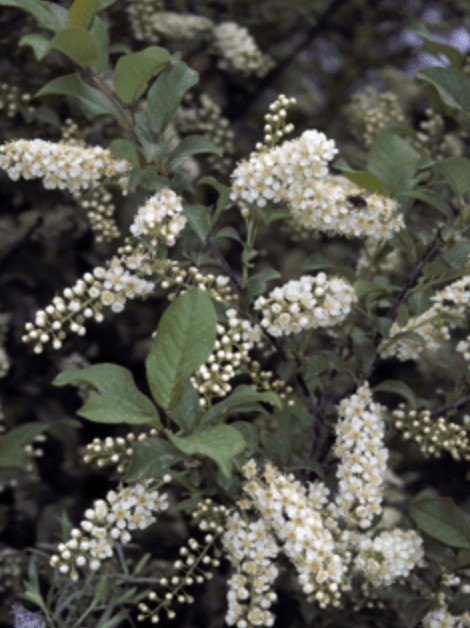
Other Common Names: Bitter-berry, western chokecherry, Virginia bird cherry
Growing Zones: 2 - 10
Average Mature Height: 6 to 10 feet
Chokecherry, or Prunus virginiana, is a small deciduous shrub or tree native to North America. It is a perennial, thicket-forming tree that has dark green and glossy leaves.
The fruit of the chokecherry tree is rich in flavonoids, antioxidants, and proanthocyanidins. These natural chemicals help fight allergies and viruses. Chokecherries also contain quinic acid, known to prevent urinary tract infections.
The tree prefers to grow in sunny areas and dry soils but can also survive in shady locations. It is drought-resistant and grows well in a variety of temperatures.
Beautiful Cherry Trees In The State of Maine
Maine is home to many cold hardy varieties of cherry trees, including Nanking cherry, black cherry, and Western Sandcherry. If you want to plant cherry trees in your Maine home, you’ll surely find a variety that will thrive in the cold weather.
Since most cherry trees are self-pollinating, you don’t need two different trees to produce fruit. However, if you want a larger crop of cherries, it’s best to plant two different varieties that are compatible with one another.
These varieties thrive under full sun, which means six to eight hours of daily sunlight. You should also use well-drained soil to ensure that your trees get enough water. If you want something less ornamental to admire in Maine, consider checking out the birch trees in Maine.
FAQs
Before you go...
Cherry trees are but one of the many trees that grow in Maine. As it turns out, there are so many more trees and tree varieties that grow in this beautiful state. Be sure to read our next article on the oak trees in Maine so that you can continue to explore the beautiful landscape of this Northern State...
Related Articles:

Christina Hernandez
Christina has done most of her research on environmental science but recently has changed her focus towards sustainable forestry. She has a passion for the outdoors and wants to spread that passion to the world.
Join our community!
Join to receive guides, insights, and the latest gardening deals!
